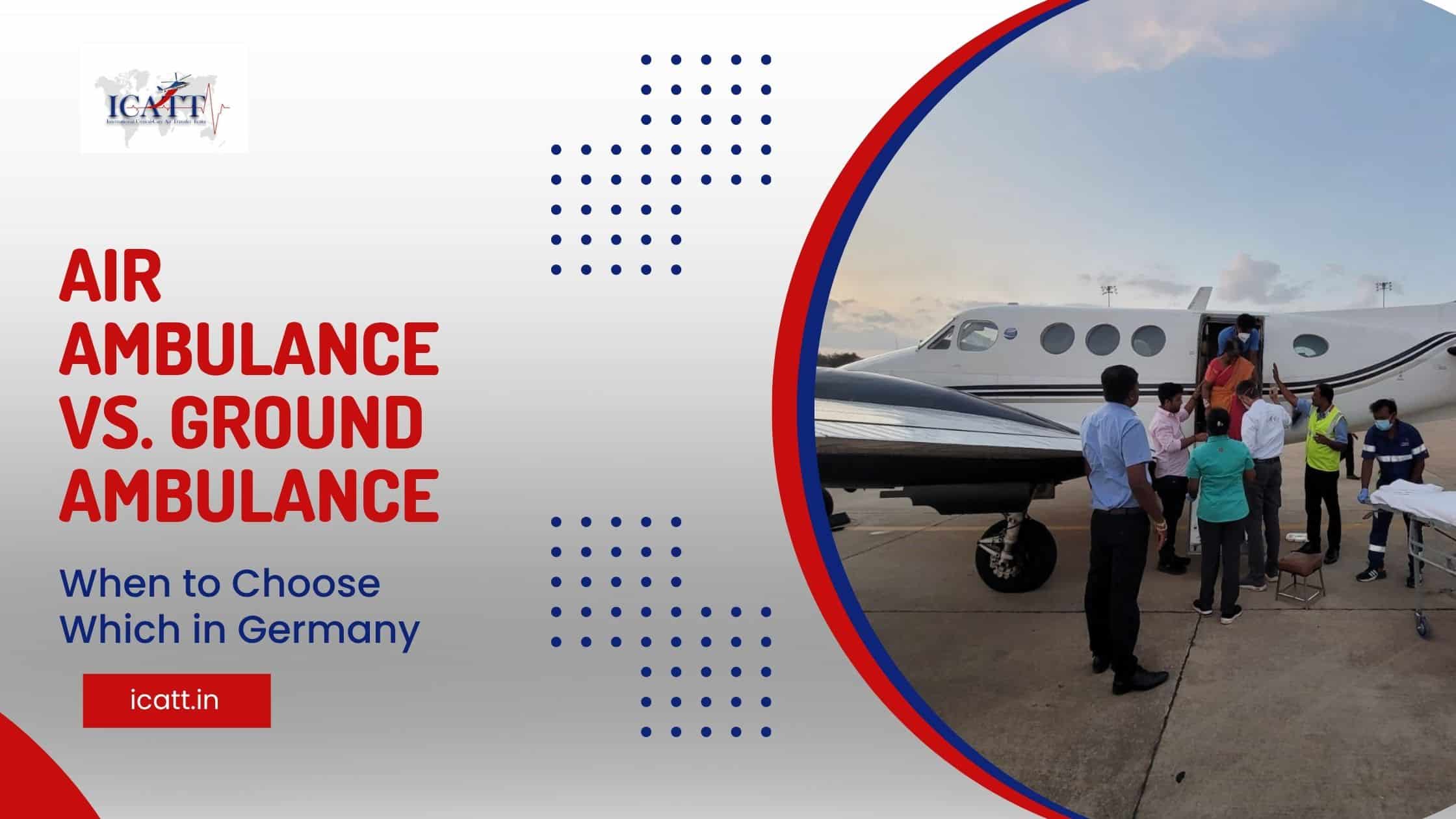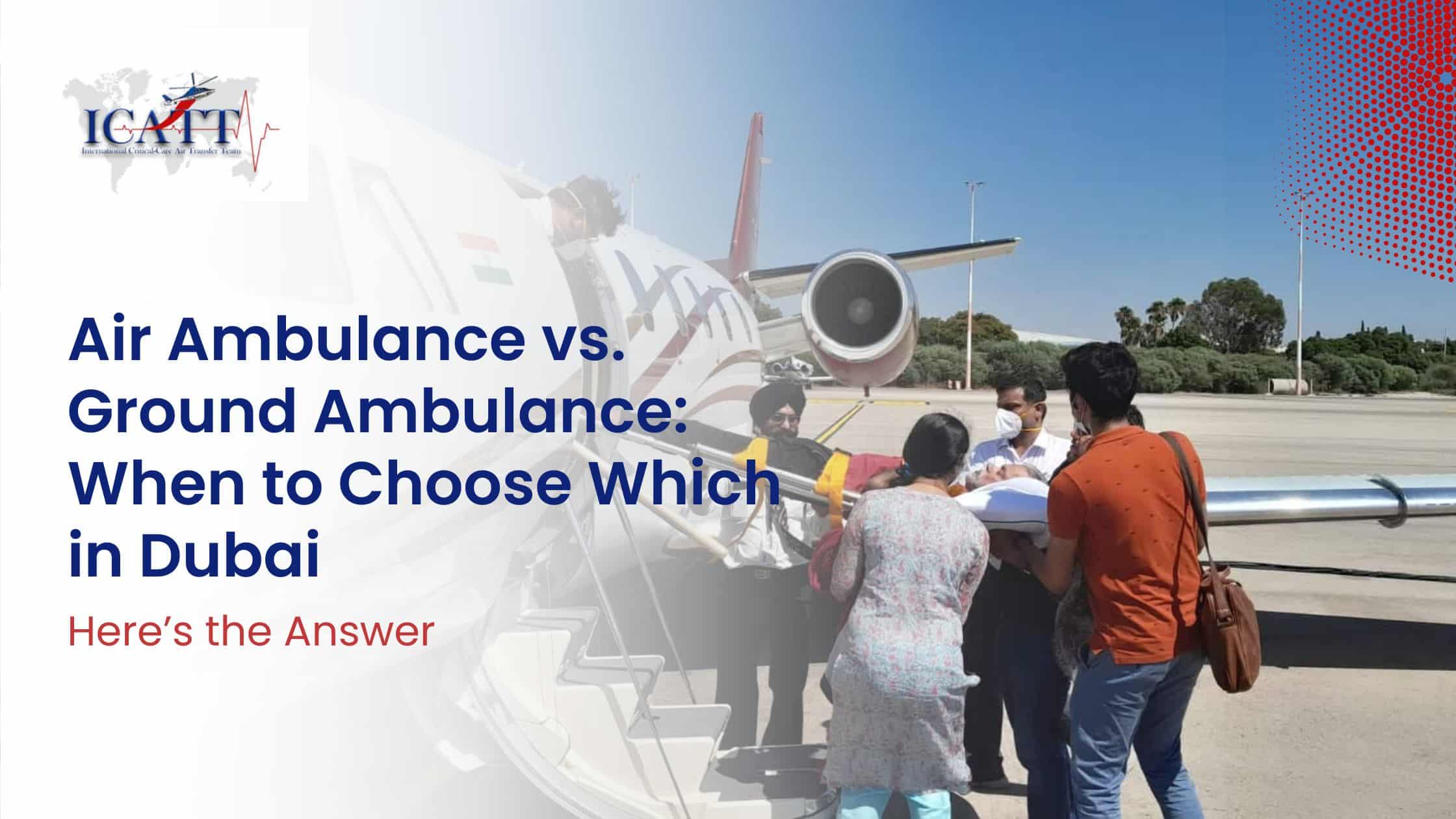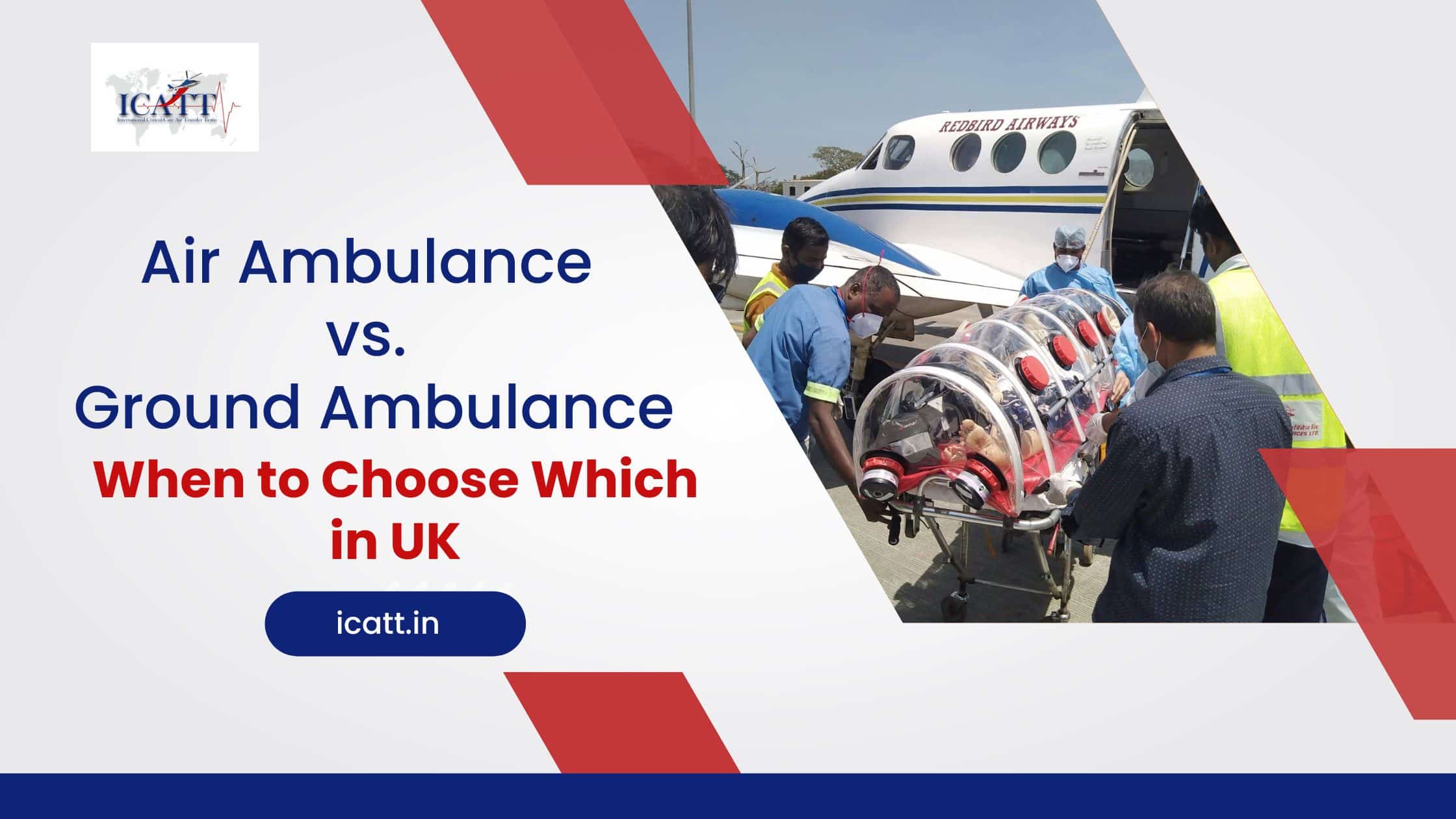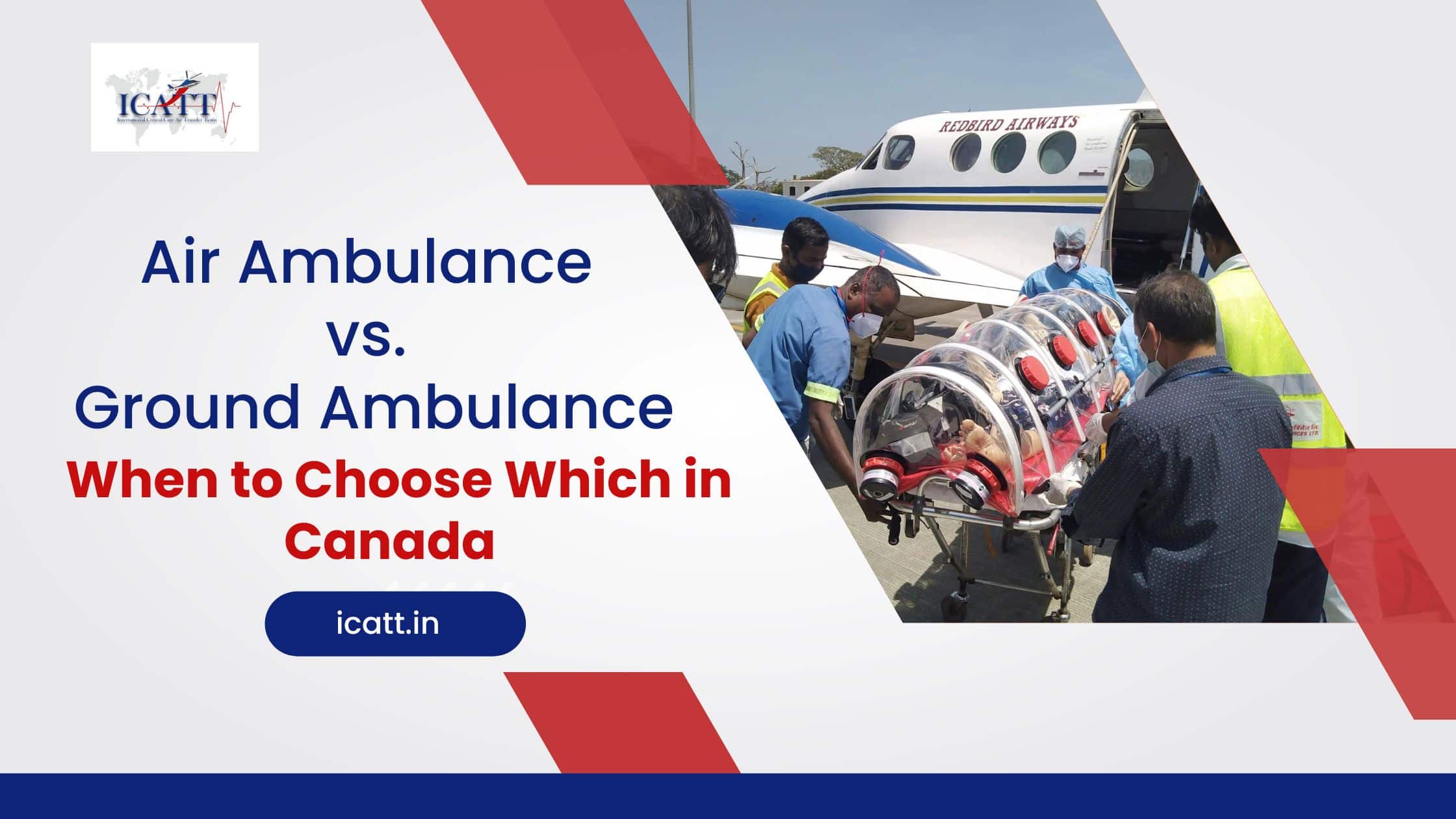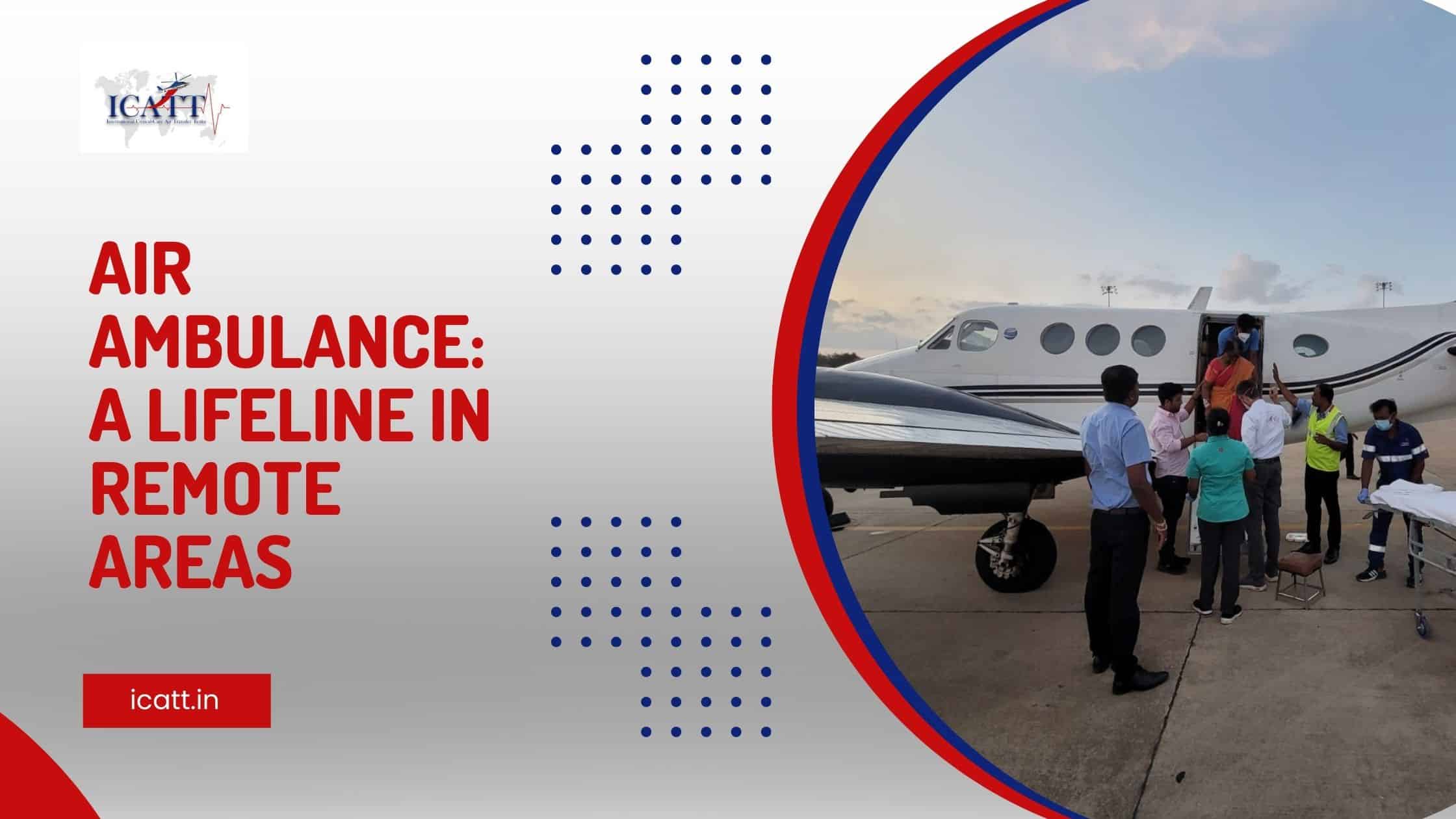The World Health Organization announced that the Covid-19 outbreak was a pandemic. There is certainly a concern about transporting infection victims who are unaware that they are carrying (and spreading) the virus. Being unprepared is not an option, and careful, detailed planning is critical. For some, problems with planning are starting.
The content mainly focuses on ambulance operations. Airline’s medical escort is limited by airline availability, national regulations and international restrictions and restrictions.
ICATT Kyathi air ambulance is India‘s leading specialist in an air ambulance, and special missions planes are working around the clock to evacuate those in need. This includes the medical evacuation of infected patients and the discharge of healthy, unaffected people worldwide. This article gives information about Air ambulances for COVID patients in India. ICATT Is the best, but why? Let us see.
ICATT Air ambulance Prepared properly
ICATT Kyathi air ambulance was already transporting patients with highly contagious diseases before the pandemic. Our crew carry out these transportations using jets or ambulance helicopters. ICATT Kyathi air ambulance personnel are trained given the Coronavirus crisis. Our team is dedicated to transporting patients with Covid-19 and, if necessary, adjusting and prescribing special procedures.
Is the aircraft suitable for the special transport of highly contagious patients?

In response to the Ebola outbreak in Africa in 2014, ICATT Kyathi air ambulance designed isolation wards to transfer highly contagious patients safely. Our learning curve was steep in the spring of 2020, and in the meantime, we have strengthened our return procedures by maintaining isolation units on our aeroplanes.
ICATT Kyathi air ambulance is pleased to announce that we have purchased the latest version of the EpiShuttle german Pods portable medical isolation unit, manufactured in Norway by EpiGuard USA. After our team’s introduction and training phase, ICATT Kyathi air ambulance is now readily started from February 8, 2020.
We installed a unique stretcher configuration on the Challenger aircraft with special EpiShuttle equipment and a ready-to-use accessory module. We have deployed a dedicated team of 4 aviation doctors in the intensive care unit and eight aviation paramedics who are now trained according to the European Disease Control Service (ECDC): Infection Prevention and Control for Patients 2019-nCoV in Health Care, from February 2020.
ICATT Kyathi air ambulance transport capabilities

Confirmed SARS-CoV-2 (2019-nCoV) case: Based on our current capabilities, we will offer the transport of patients with an actual 2019-nCoV infection on a case-by-case basis. These flights are carried out on an EpiShuttle unit with a specially trained medical team and equipment.
Accidental contact with SARS-CoV-2 negative serology: We offer case-by-case transportation of positive patients as determined by the negative serological test result “2019-nCoV”. These flights are carried out on an EpiShuttle unit with a specially trained medical team and equipment.
Patients with diseases not related to SARS-CoV-2 (2019-nCoV): Transporting ambulances for patients with an unrelated diagnosis from the location where the outbreak was detected is analyzed in the same way on a case by case basis.
Does the service offer essential in-flight care options?
- Experienced and intensive care therapists and aviation nurses.
- Equipment for planned or unexpected sedation, intubation, ventilation, and cardiovascular support.
- Complicated airway management procedures and tools and scenarios for routine discontinuation.
- Comprehensive follow-up care for patients in the intensive care unit, including options for sleep.
Now see Why ICATT Kyathi is best for transferring covid Patients?

ICATT follows the minimum recommended procedure for all patient transfers during a pandemic.
- Medical aviation teams should wear “routine” PPE (gloves, aprons, N95 masks and face shields or safety goggles) when assessing patients before the flight.
- First, take the patient’s temperature while collecting recent medical history and history of chronic health / other risk factors. Ask specifically about the respiratory tract and flu-like symptoms.
- Check the chest; Check dehydration and measure blood pressure and oxygen saturation (reads FiO2).
- Pay attention to the oropharynx.
- Check chest x-rays, if available.
- Check recent blood results (especially for markers of infection/inflammation).
- Complete the pre-flight habit assessment provided for each patient.
- Check the latest observations / MEWS / NEWS (etc.).
- Covid-19 test, if available and subject to weather.
- Aviation medical teams wear routine PPE throughout the flight if the patient has no significant findings or a history of Covid-19 infection.
- If a patient raises a high suspicion, he should be treated as a very infected patient.
- For all patients, the doctor should once onboard and for at least one hour after that.
Any new damage or disease must be documented and symptomatically treated. If indicated, ask the patient to wear an N95 mask.
ICATT follows Aircraft Decontamination

- Exits and doors must be open at least 20 minutes after a patient with COVID-19 are transported. The air conditioning system is switched on for several minutes at maximum capacity according to the aircraft manufacturer’s emission times to ensure complete air exchange. The non-pressurized aircraft must be detonated, with the exits and doors left open long enough to allow for full air exchange.
- Cleaning should be delayed until airing out is complete—at least 20 minutes.
- A suitable mark will be posted on the aircraft by the specified flight crew after the doffing. This sign indicates that no one can touch the plane until environmental workers have completed the decontamination process. Ecological services will remove the tag after they have completed the decontamination process.
- Any equipment or dirty objects requiring disinfection are placed in the “dirty area” specified in the Conex box.
- Patients are transported through the hangar in designated lanes marked with floor markings throughout the hangar. Patients and transport personnel are not allowed to leave the designated route during transport.
- Aircraft areas that are not treating patients should be cleaned and serviced according to the SOP instructions. The pilot clears all cockpit treated or touched surfaces, including but not limited to, doorknobs, flight controls, avionics contact points, etc. Suitable PPE is used when cleaning the cockpit. Minimal gloves and eye protection.
- Patient care areas (including stretchers, fences, medical device control panels, and adjacent floors, walls, and work surfaces that may be directly contaminated during treatment) should be cleaned and disinfected with an EPA registered disinfectant approved by the ICATT SOP program.
- Personal protective equipment (PPE) to prevent contact with bactericides should be worn following existing organizational procedures to clean and disinfect the environment when cleaning patient care areas.
- Cleaners should wear at least one protective equipment as indicated in the instructions on the disinfection label. Also, shoulder clean up body fluids spills during transportation up by placing absorbent material on the spill and collecting used cleaning agents in hazardous bags. Also must clean the overflow area with an EPA approved disinfectant approved by the ICATT aircraft SOP.
- Contaminated chairs, curtains or chair cushions requiring repair following the Environmental Services Protocol.
- Contaminated and reusable patient equipment should be placed in a biohazard bag and labelled for cleaning and disinfection at the receiving facility before returning to the aircraft.
- Reusable devices should be cleaned and disinfected according to the manufacturer’s instructions.
- After completing cleaning operations, including cleaning and disinfecting reusable equipment, cleaners should carefully remove and dispose of personal protective equipment, and wash hands with soap and water or alcohol.
Conclusion:
With the recent purchase of portable self-isolating devices, the shuttle EPI, ICATT could transfer infected patients without risk to flights or medical crews. All ICATT Kyathi air ambulance missions are accompanied by a trained and specialized medical team to check temperatures before a flight and medical/in-flight care as needed.
So, ICATT Kyathi Air ambulance is the best air ambulance for transferring Covid patients in India. Contact ICATT Kyathi Air ambulance at +91-9701111156.

